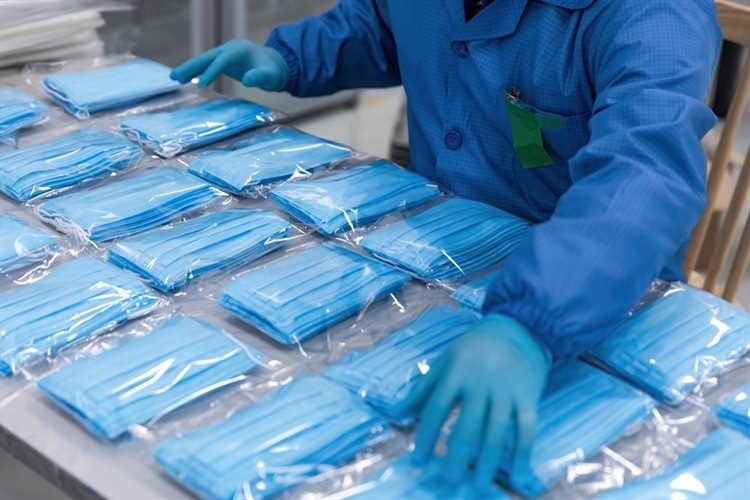Healthcare Supply Chain Resilience: Lessons Learned from the Pandemic and Strategies for the Future
 The coronavirus disease 2019 (COVID-19) pandemic significantly altered how many industries worked, not least the global healthcare industry. In particular, healthcare supply chains were drastically impacted by the pandemic. Healthcare supply chains have not returned to their previous operations; it seems they have been forever changed.
The coronavirus disease 2019 (COVID-19) pandemic significantly altered how many industries worked, not least the global healthcare industry. In particular, healthcare supply chains were drastically impacted by the pandemic. Healthcare supply chains have not returned to their previous operations; it seems they have been forever changed.
The pre-pandemic supply chain
Before the COVID-19 pandemic hit, the operations of healthcare supply chains focussed on cost-effectiveness, efficiency, and most often worked on a just-in-time method of inventory management. Below, we discuss some of the key features of healthcare supply chains in the pre-pandemic era.
The just-in-time strategy involves moving supplies just before they are needed. If needs are anticipated accurately, then this method allows little inventory to be stocked, which can reduce storage costs.
The just-in-time approach goes hand-in-hand with the lean inventory management approach. This is where stockpiling is reduced to as minimal as possible; the aim here is to strike the perfect balance between supply and demand, reducing the overheads of keeping stock while being able to respond to demand without incurring long wait times.
Before the pandemic, healthcare supply chains very often used these lean, just-in-time approaches.
In addition, in the pre-pandemic era, healthcare supply chains were often globalized, meaning that medicines and devices were sourced from across the globe - the assumption being that access to these supplies is rapid and simple given global travel.
The COVID-19 pandemic rapidly highlighted vulnerabilities in the healthcare supply chain. With the breakdown of global logistics, supply chains rapidly broke down. The just-in-time approach could not work in a world where international supplies were no longer accessible. Lean inventories were wiped out as demand rapidly exceeded supply.
Disruptions during the pandemic
Over the course of the pandemic, supply chain breakdowns became common. People around the world felt the impact of this, from food shortages in supermarkets to the lack of access to personal protective equipment.
Extreme shortages in access to diagnostic tests and equipment needed to protect healthcare workers are some of the hallmarks of the pandemic. These shortages reflect breakdowns in healthcare supply chains.
The US healthcare supply chains heavily relied on imports of masks manufacturing in China. Using a just-in-time approach meant that when the pandemic unexpectedly hit, the US did not have enough masks stockpiled at home to respond to the healthcare crisis. As China stopped shipments to the US during the outbreak, the US ran into huge difficulties in providing healthcare professionals with the equipment they needed.
Immediate responses and quick fixes
In the US, hospitals saw their orders of medical masks go unfilled. Some hospitals were forced to pay as much as $5.20 per mask due to the inflated costs of PPE caused by shortages.
In the UK, the healthcare system was facing a shortage of ventilators at the beginning of the pandemic. The government responded by launching the Ventilator Challenge, calling manufacturers and medical device companies to ramp up production of existing ventilators and design new ones. More than 5,000 companies offered their support, resulting in the production of over 14,000 ventilators in just three months.
Strategies to enhance resilience
Since the pandemic, healthcare supply chains have evolved so that they are better protected from future unexpected events. Domestic production in many countries has increased so that supply chains are less reliant on imports from overseas. Supply chains are also diversifying their suppliers. The more suppliers a supply chain has already vetted, the more resilient it is to events that suddenly affect manufacturing operations or logistics.
The COVID-19 pandemic had the impact of accelerating the digital transformation of supply chains. For the years leading up to the pandemic, supply chains had been undergoing digital transformation. The disruption caused by the pandemic, however, forced accelerated progress of this transformation.
Supply chains are now more reliant on artificial intelligence (AI) to help predict demand more accurately so that stockpiles can be better prepared. AI is also being used to improve warehouse logistics, inventory management, and quality control, resulting in sleeker, more cost-effective operations that are more responsive to the needs of the market.
The way forward: long-term solutions
Since the pandemic, there has been a resurgence in regional supply chains. There is a trend to rely more heavily on local suppliers rather than distant, international ones. Supply chains are also beginning to see the benefit of forging stronger private-public partnerships, such as ensuring greater protection and reduced financial risk for a supply chain.
Finally, there has been a push towards integrating transparency and ethical considerations into supply chain strategies. This has come from the demand for increased supply chain transparency following the breakdowns of the pandemic, along with increasing consumer awareness and interest in purchasing supplies that have been produced ethically.









